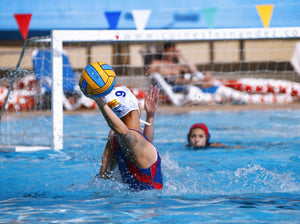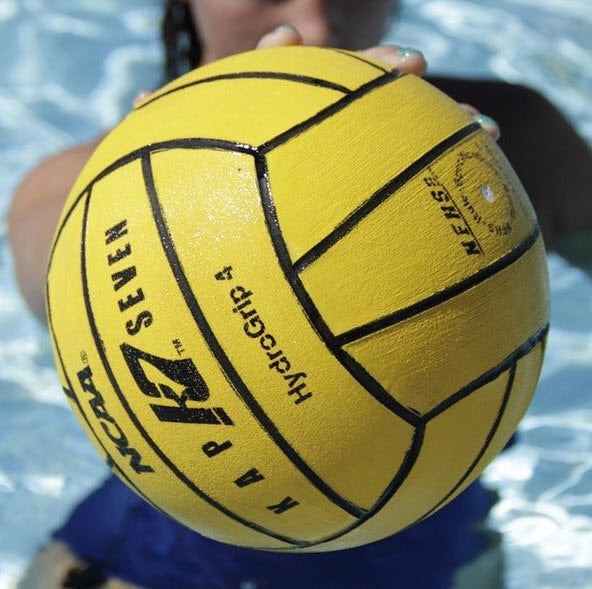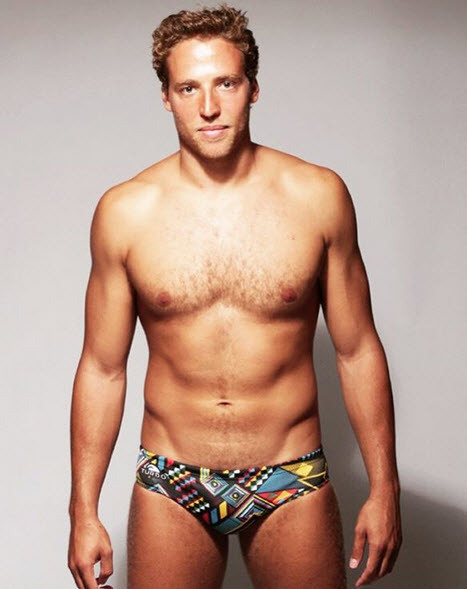How to Throw a Water Polo Ball
.jpg) During a game of water polo, everyone touches the ball. While beginning players might still be struggling with their eggbeater and heads-up freestyle, it is important for them to develop their ball handling skills as well. All water polo players need to be able to throw crisp passes, make long, accurate throws on counterattacks, and rocket the ball into the goal to score.
During a game of water polo, everyone touches the ball. While beginning players might still be struggling with their eggbeater and heads-up freestyle, it is important for them to develop their ball handling skills as well. All water polo players need to be able to throw crisp passes, make long, accurate throws on counterattacks, and rocket the ball into the goal to score.
The Ball
Water polo balls weigh 400-450 grams (14-16 ounces) and come in two sizes: Size 5 (68-71 centimeters in circumference) intended for use by men, and a size 4 (65-67 centimeters) for women. While they often look like volleyballs, water polo balls are bigger, heavier, and have a rubber exterior designed to provide grip in the water. Smaller balls for juniors exist, but are not used in standardized play.
How to Throw
It can be a challenge for new players to maintain the correct body position, keep their head above the water, and accurately throw a ball all at once. There are lots of tempting cheats: Picking the ball up from the top, laying on their back for a long distance throw, or dragging an elbow through the water during a pass. As frustrating as it feels at first, it is worth it to establish good throwing practices to prevent injury and ensure a better performance in a game.
Step 1. Pick Up the Ball
Always pick a water polo ball up from underneath. There are two reasons for this:
1. Picking the ball up from the top encourages gripping the ball with just the fingertips. This is not the ideal way to hold the ball.
2. During games, a defender can press down on your hand, pushing the ball underwater. Even though they are the one doing the pushing, this will result in a ****ball under**** call and consequent turnover.
Picking the ball up on top is a bad habit adopted by countless beginners. Learn early on to pick the ball up properly. After lifting it out of the water, allow your hand to cradle the ball. You should feel it making contact with your palm and all five fingertips.
Step 2. Get in the Correct Body Position
 Point the shoulder of your free arm toward your passing partner, the goal, or wherever you want the ball to land. Your entire body should be perpendicular to your target. For right-handed players, that means the ideal body position is:
Point the shoulder of your free arm toward your passing partner, the goal, or wherever you want the ball to land. Your entire body should be perpendicular to your target. For right-handed players, that means the ideal body position is:
- Left shoulder facing the target
- Left leg and hip facing the target, right leg and hip back
- Right arm up, elbow out of the water, hand behind the head cradling the ball
Your eggbeater will increase in speed and power at this point as your legs work to keep the weight of your arm, shoulders, and ball out of the water. Your free hand should be in the water in front of you sculling. This provides stability for the throw.
It’s tempting to watch your arm and the ball to see if they’re positioned correctly, but that is also a surefire way to throw off your aim.
Step 3. Throw the Ball
While keeping your elbow out of the water, throw the ball at your target. Don’t let your elbow lead your hand; keep your entire arm fairly rigid. As you throw, rotate your torso and lower body in the direction of the target. Finish by letting the ball roll off your fingertips, snapping your wrist, and slapping the water in front of you. A ball that has been released correctly has a good backspin (it will be easy to see if the ball is spinning backwards, side-to-side, or not at all).
Doing so engages the large muscles in your upper body, which helps provide the momentum a water polo ball needs to travel quickly and accurately.
At the end of the pass, your throwing arm should be in front of you with your strong side (arm, hips, and legs) facing the target.
Practice
Good passing and shooting both require dedicated practice. Passing with a partner in the water and getting feedback from a coach is the ideal way to refine throwing skills, but there is nothing wrong with bouncing a ball off a wall or working on long passes while alone in the pool. It’s also important to practice different kinds of skills within the “throwing” category: Using your weak hand, short passes, long passes, passing while swimming, and wet passes.
Passing versus Shooting
Both passes and shots utilize the same basic movements and body position, but have different purposes. Here are some important things to keep in mind as you master these:
Passing
Passes to your partner should have enough velocity to stay straight, not arcing. While a soft pass is difficult to catch, so is an incredibly hard one. Save your most powerful throwing for shooting. When passing to someone, aim slightly above their head and to their strong-side hand.
It’s a good idea to be comfortable handling the ball with both hands. Defenders often guard your strong side, so being able to make an accurate pass or shot from the left or the right is a valuable skill.
Shooting
Get as high out of the water as possible when you shoot. Doing so will increase the power behind your shot, and decrease your defender’s ability to block it. Accuracy is even more crucial when you’re aiming for the goal, so use your wrist and follow-through to direct the ball.
Throwing the Ball is Just the Beginning
Because there are so many things to think about at once (eggbeater, body position, holding the ball, the target, follow through, etc.), throwing a water polo ball is often a challenge for new players. However, good passing and shooting quickly lead to learning more interesting skills in the water, such as: skip shots, backhands, power plays, and more. Also remember that throwing a water polo ball can be quite a strain on the shoulder. Be sure to stretch before and after practice, and never forget a good warm-up to loosen your muscles.



